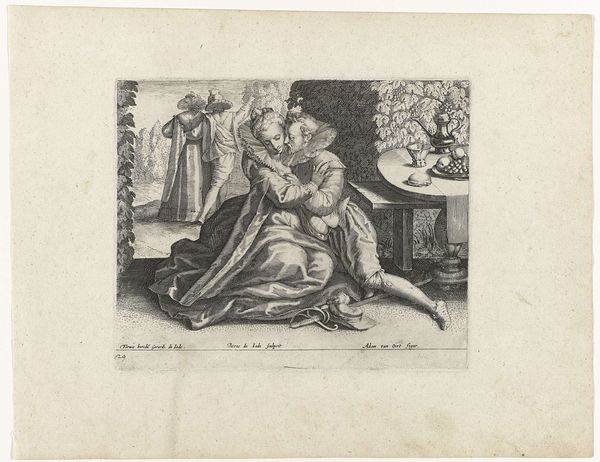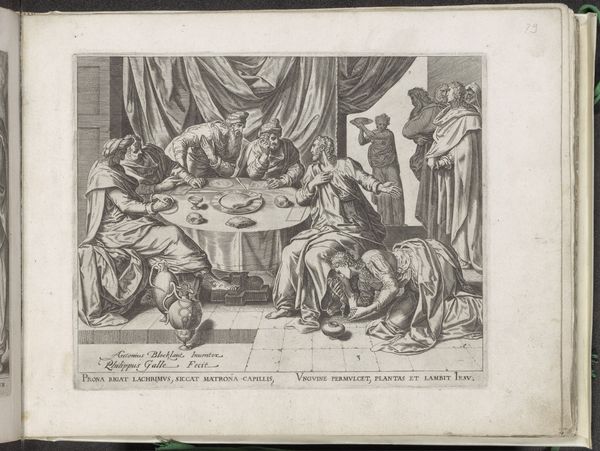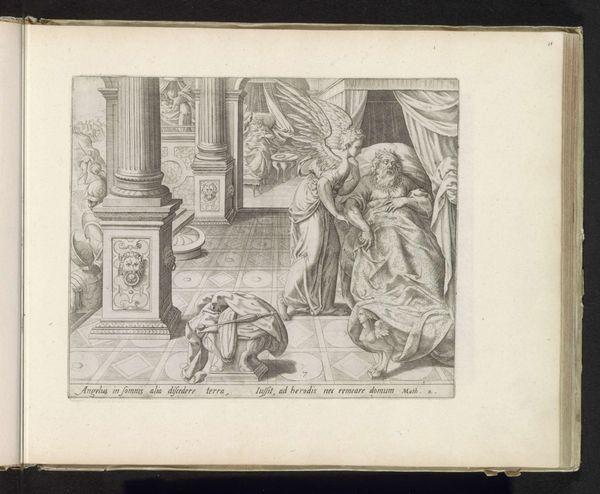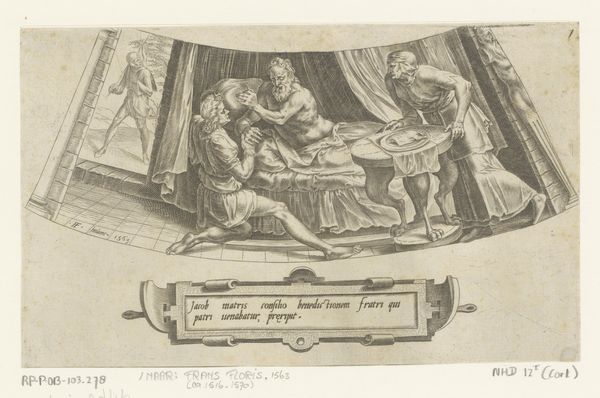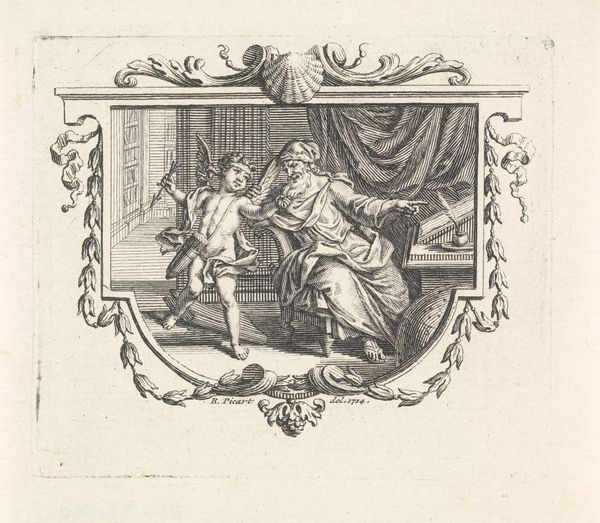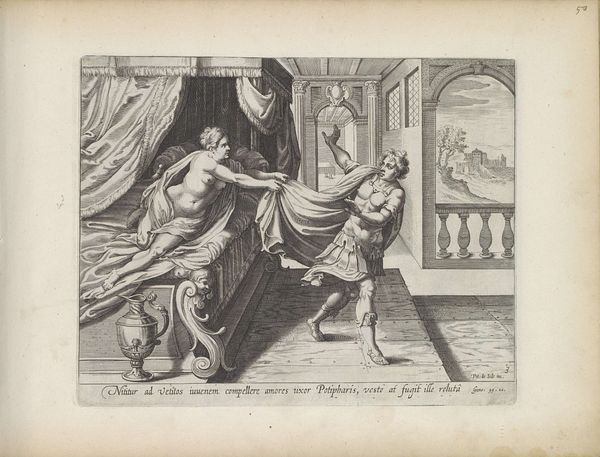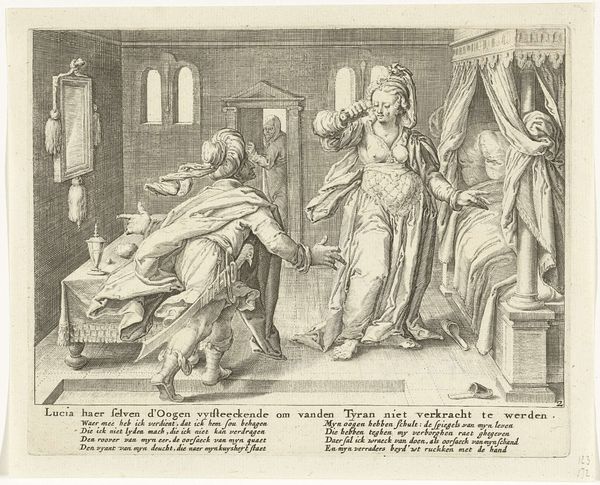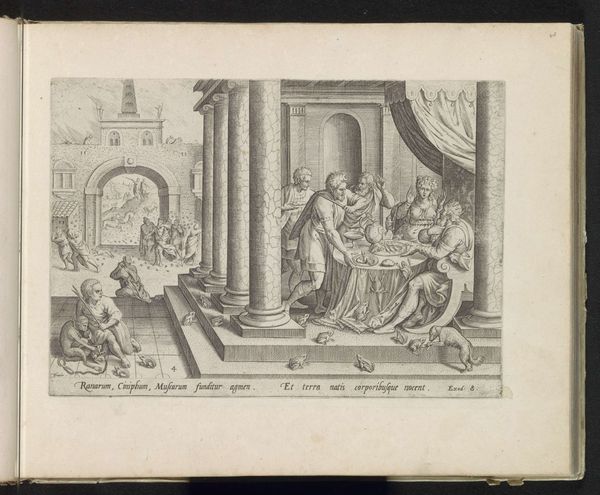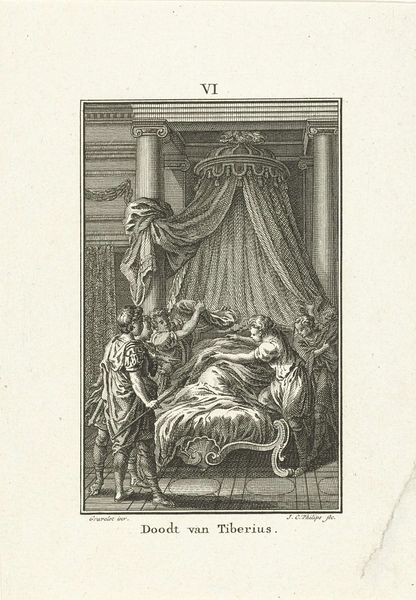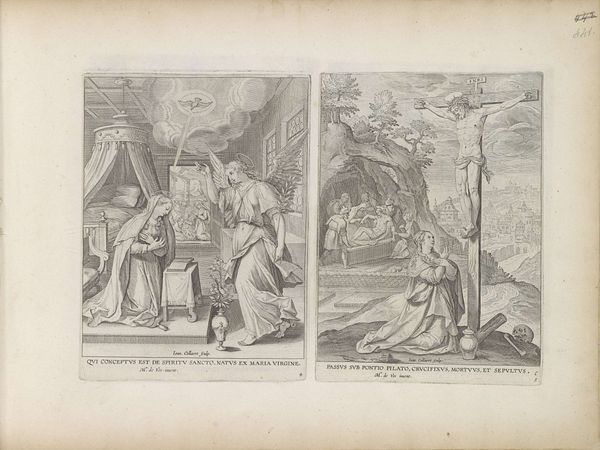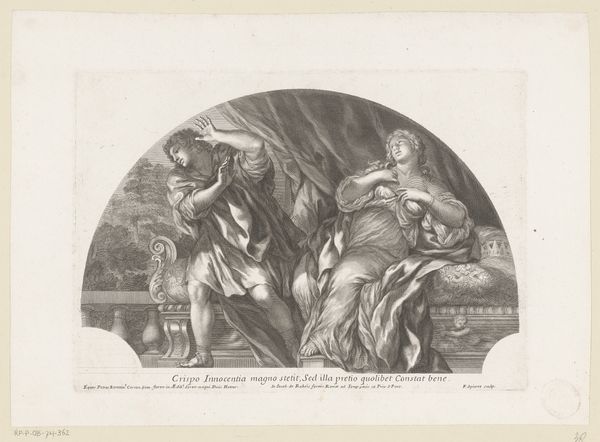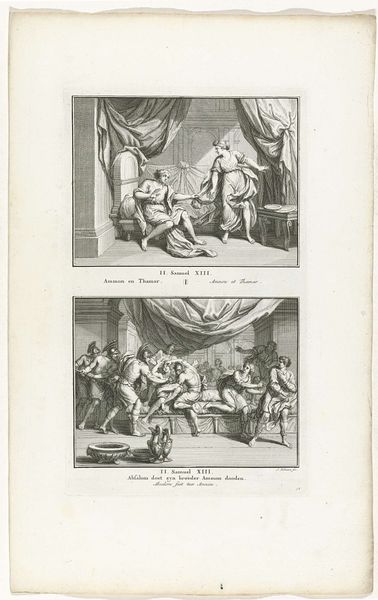
print, engraving
#
narrative-art
# print
#
figuration
#
history-painting
#
italian-renaissance
#
engraving
Dimensions: height 210 mm, width 265 mm
Copyright: Rijks Museum: Open Domain
This print, Jozef en de vrouw van Potifar, was made anonymously. Its creation involved the use of metal plates, acid, and a printing press – techniques of mass production, even at this early stage. What interests me most is how the print's material properties affect its appearance. The sharp lines, the contrast between light and shadow, and the reproducible nature of the image are all consequences of the etching process. Look closely, and you’ll notice the incredible level of detail, achieved by someone highly skilled in this particular form of reproductive technology. But let’s think about what this image represents socially. Prints like these circulated widely, making biblical scenes accessible to a broad audience. The act of making prints such as these isn't an isolated act of craftsmanship; it’s an integral part of a larger system of production and distribution. So, when we consider an artwork like this, let's remember that the materials, techniques, and cultural context are all equally important in understanding its full meaning. They challenge the traditional distinction between fine art and craft.
Comments
No comments
Be the first to comment and join the conversation on the ultimate creative platform.
